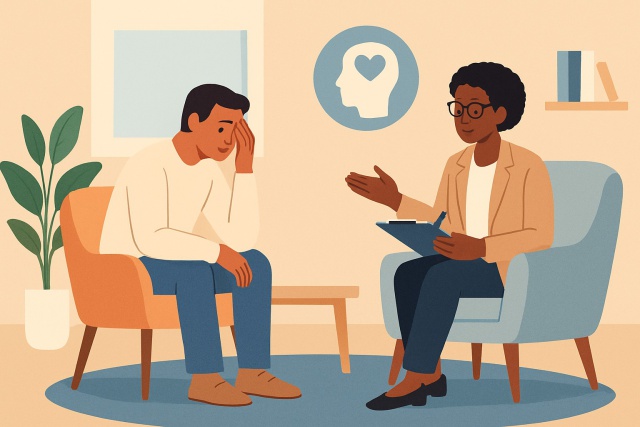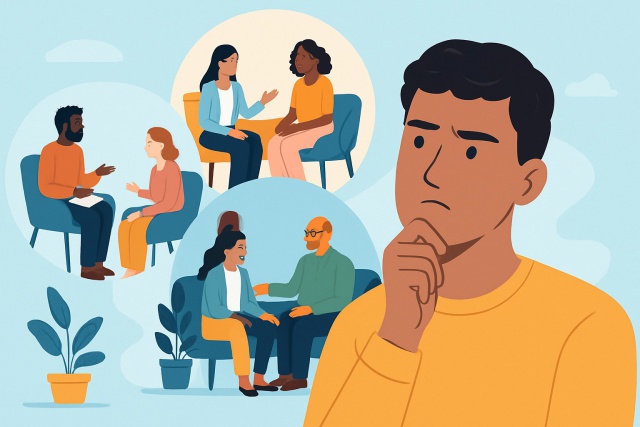
How Immersion Therapy Helps Treat Anxiety and Fears
Facing fears head-on with immersion therapy can rapidly reduce anxiety symptoms. This guide breaks d...
Countertransference in therapy happens when a therapist unknowingly lets their own feelings or past experiences color how they see and interact with a client. It’s one of those tricky things that can sneak up on even the most seasoned professionals.
This article takes a closer look at what countertransference really means in therapy and how it commonly pops up during sessions. It also covers why it happens and the best ways therapists can spot and manage it.
Countertransference occurs when a therapist's emotional reactions to a client are colored by their own personal feelings or past experiences. The therapist's emotions act as a kind of mirror, reflecting their inner world onto the client—sometimes blurring the lines and shifting how they perceive and respond to them.
It helps to draw a clear line between countertransference and transference since they often get tangled up in people's minds. Transference is when clients unintentionally project feelings or patterns from earlier relationships onto their therapist — something that can sneak up on you. Countertransference is the therapist's own emotional response to the client that comes from their side of the room. Both naturally happen in therapy but originate in different places and move in opposite directions.
Countertransference springs from deep psychological roots and usually sneaks in through unconscious reactions. A therapist’s own past and personal vulnerabilities can color how they respond during sessions.
Sometimes countertransference sneaks up on you in the most unexpected ways. It shows itself in various forms and, believe it or not, not all are obvious at first glance. Let us take a closer look at these different flavors of countertransference, complete with some real-life examples that might just make you nod in recognition.
Countertransference tends to sneak in many ways, from warm fuzzy feelings like idealizing or genuinely caring for a client to less pleasant ones like irritation or hostility. Sometimes it gets trickier by involving tangled reactions like over-identifying with the client's situation. Spotting these patterns early can illuminate how they affect the therapy process.
These reactions can range from being barely noticeable to downright intense. Sometimes they disrupt a therapist's effort to stay neutral and effective. For example, when a therapist over-identifies they might unintentionally steer the session based on their own feelings instead of focusing on the client's needs.
Countertransference can sneakily throw a wrench into therapy if left unchecked and cause therapists to accidentally project their own challenges or biases onto clients—sometimes doing more harm than good. But here’s the flip side: when therapists stay mindful of countertransference it often amps up their empathy and allows them to truly connect and understand clients on a deeper level.
| Impact Type | Description | Example | Potential Consequence on Therapy Outcomes |
|---|---|---|---|
| Positive Impact | Taps into emotional insight to create genuine trust and connection | Therapist feels both protective and sharply attentive | Helps build a rock-solid therapeutic bond, nudging the client forward in meaningful ways |
| Negative Impact | Therapist’s own unresolved baggage sneaks into sessions, coloring how things go | Therapist might slip into being overly critical or pull back a bit | Clients often end up feeling misunderstood, and therapy can hit the brakes unexpectedly |
Therapists usually spot countertransference by staying self-aware and checking in with supervisors. They mull over sessions during or afterward.
Ethical standards and professional training really hammer home how vital it is to manage countertransference if therapy is going to do its job well.

Clients can sometimes find themselves caught off guard by confusing or unexpected emotional reactions during therapy. More often than not these stem from countertransference. Being able to spot these moments is vital. I’ve found that when clients feel comfortable enough to share what’s really bubbling up inside and ask for a bit of clarity it really helps keep the whole therapeutic relationship solid.
Countertransference tends to pop up across a bunch of therapy styles, from psychodynamic and cognitive-behavioral to humanistic and group therapies.
No matter the therapeutic approach, getting a good handle on countertransference in therapy is absolutely essential. Therapists lean on their awareness and tools that fit their own style to stay both effective and ethical.

Facing fears head-on with immersion therapy can rapidly reduce anxiety symptoms. This guide breaks d...

Confused about choosing a therapist or counselor? This article breaks down their key differences acr...

Not sure what kind of therapist you need? This practical guide breaks down therapy types, helps you...

Discover how bottom up therapy focuses on the body and nervous system to unlock lasting emotional he...